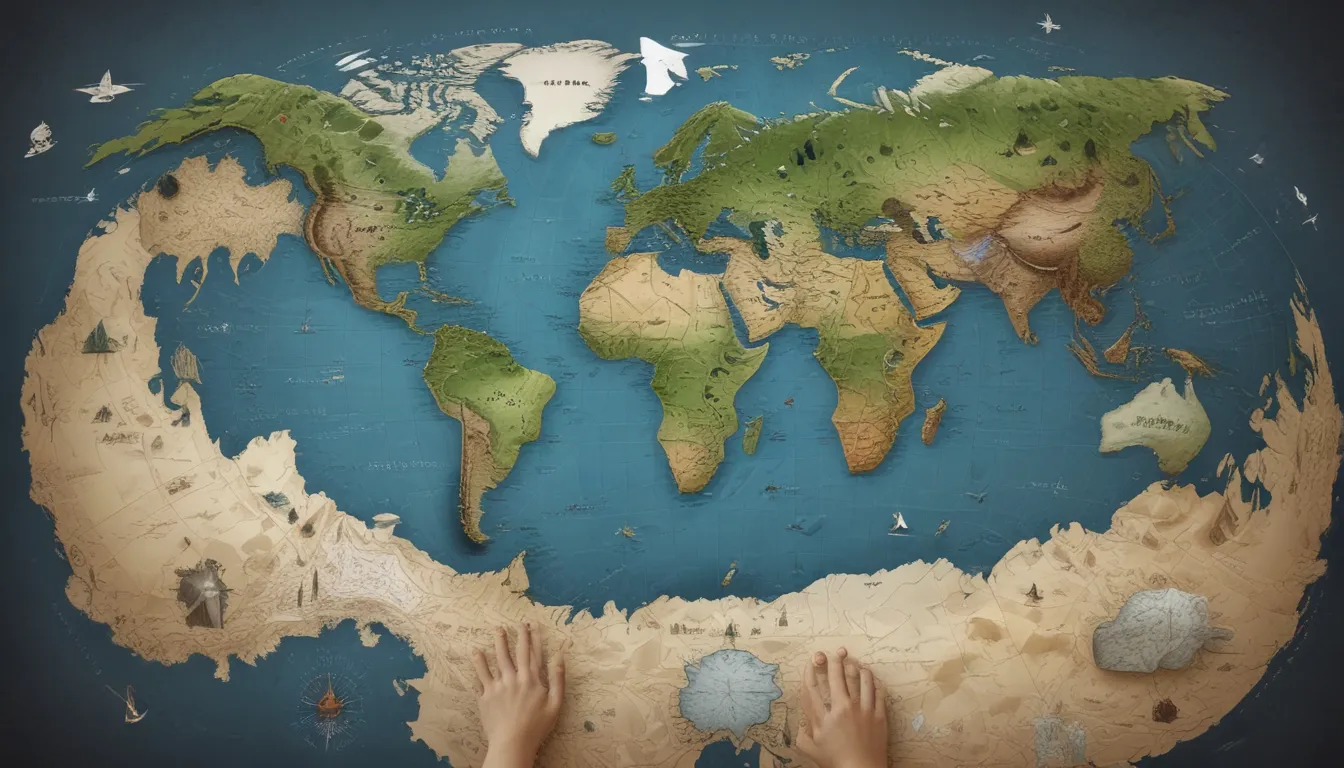A Note About Images: The images used in our articles are for illustration purposes only and may not exactly match the content. They are meant to engage readers, but the text should be relied upon for accurate information.
Navigating our vast planet is made possible through the use of geographic coordinates. These numerical values, such as latitude and longitude, provide a universal way of pinpointing locations on Earth. Whether you’re a geography enthusiast or simply curious about our planet, understanding geographic coordinates can open up a world of exploration and knowledge. In this article, we will uncover 12 captivating facts about geographic coordinates that will enhance your understanding of their significance.
Key Facts About Geographic Coordinates
- Geographic coordinates, such as latitude and longitude, are essential for navigation, disaster management, and exploring celestial bodies.
- The Global Positioning System (GPS) relies on geographic coordinates for precise location determination.
Exploring Geographic Coordinates
Geographic coordinates, also known as latitude and longitude, are numerical values that define a specific location on Earth’s surface. These coordinates serve as a global framework for identifying positions across the planet.
Understanding Latitude and Longitude
Latitude and longitude are the two components that make up geographic coordinates. Latitude measures the distance north or south of the equator, while longitude measures the distance east or west of the prime meridian.
The Importance of the Prime Meridian
The prime meridian, located in Greenwich, London, serves as the starting point for measuring longitude. It divides the Earth into the Eastern and Western Hemispheres, providing a reference point for navigation.
Exploring Latitude Ranges
Latitude is measured in degrees, ranging from 0° at the equator to 90° at the North and South Poles. The equator itself represents 0° latitude, with values increasing towards the poles.
Delving into Longitude Ranges
Longitude is also measured in degrees, ranging from -180° to 180°. The prime meridian holds a longitude of 0°, while the International Date Line marks 180° longitude.
Formats of Geographic Coordinates
Geographic coordinates can be expressed in various formats, including degrees, minutes, and seconds (DMS) or decimal degrees (DD). Different formats cater to different purposes, such as navigation or scientific research.
The Role of GPS
The Global Positioning System (GPS) heavily relies on geographic coordinates to determine precise locations on Earth. By utilizing signals from multiple satellites, GPS devices can provide accurate coordinates anywhere on the planet.
Regional Coordinate Systems
Different countries and regions have adopted their own coordinate systems for mapping and surveying purposes. This helps ensure accurate measurements and consistency in location data.
Calculating Distance and Direction
Geographic coordinates are essential for determining the distance and direction between two points on Earth’s surface. Mathematical formulas can be used to calculate these values, known as distance and bearing.
Unveiling Celestial Coordinates
Geographic coordinates are not limited to Earth and can also be used to locate specific points on other celestial bodies, such as the Moon or Mars. This capability enables accurate mapping and exploration of celestial entities.
Addressing Disaster Management
Geographic coordinates play a crucial role in disaster management by pinpointing affected areas, facilitating rescue operations, and coordinating relief efforts during emergencies or natural disasters.
Navigating with Geographic Coordinates
Geographic coordinates have been instrumental in navigation throughout history. From ancient explorers using celestial observations to modern GPS technology, coordinates have guided ships, aircraft, and travelers to their destinations.
By exploring these 12 captivating facts about geographic coordinates, we gain a deeper appreciation for their significance in accurately determining locations on Earth and beyond. Whether used for navigation, research, or disaster management, geographic coordinates are invaluable tools that shape our understanding of the world.
Frequently Asked Questions About Geographic Coordinates
Q: What are geographic coordinates?
A: Geographic coordinates are a system of latitude and longitude measurements that pinpoint specific locations on Earth’s surface.
Q: How do latitude and longitude work?
A: Latitude measures distance north or south of the equator, while longitude measures distance east or west of the prime meridian.
Q: What is the significance of geographic coordinates?
A: Geographic coordinates provide a universal method for pinpointing locations on Earth, crucial for navigation, mapping, and communication.
Q: How does GPS use geographic coordinates?
A: The Global Positioning System (GPS) utilizes geographic coordinates to determine precise positioning information by triangulating signals from satellites.
Q: Can geographic coordinates be used to locate any point on Earth?
A: Yes, geographic coordinates can locate any point on Earth’s surface, ensuring precise identification regardless of language or culture.
Q: How accurate are geographic coordinates?
A: The accuracy of geographic coordinates varies based on the technology used, with GPS receivers achieving high levels of accuracy.
Q: Are there alternative coordinate systems to geographic coordinates?
A: While geographic coordinates are widely used, alternative systems like UTM and MGRS cater to specific needs, such as large-scale mapping and military applications.
Conclusion
In conclusion, geographic coordinates are indispensable tools that enhance our understanding and navigation of the world. By grasping the significance of latitude and longitude, we can acknowledge how these coordinates revolutionize exploration and interaction with Earth. Whether pinpointing locations, mapping routes, or studying natural disasters, geographic coordinates play a vital role in our everyday lives. Next time you look at a map or use GPS coordinates, take a moment to marvel at the fascinating world of geographic coordinates and their profound impact on our world.






